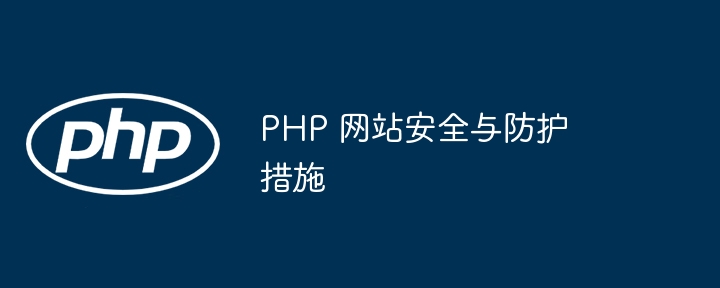Home >Backend Development >PHP Tutorial >PHP website security and protection measures
PHP website security and protection measures
- 王林Original
- 2024-05-04 22:48:02925browse
PHP website security measures include: Preventing SQL injection: using prepared statements or escaping user input. Prevent XSS: Escape user input. Prevent CSRF: Use CSRF tokens. Prevent buffer overflow: Set the maximum input length. Stay updated, use security frameworks, enable firewalls, monitor websites, conduct security audits.

PHP Website Security and Protection Measures
PHP As a popular web programming language, website security is crucial. This article will explore common PHP website security threats and provide practical cases to demonstrate how to implement effective protective measures.
Common PHP website security threats
- SQL injection: Attackers use malicious code to modify or corrupt database queries through user input.
- Cross-site scripting (XSS): Injects malicious JavaScript code into a web page to perform an attack in the user's browser.
- Cross-site request forgery (CSRF): Tricks users into submitting unauthorized requests to a website.
- Buffer overflow: An error that occurs when a function or program writes a variable whose size exceeds its allocated memory.
Practical case
Prevent SQL injection:
// 使用预处理语句
$stmt = $conn->prepare("SELECT * FROM users WHERE username = ?");
$stmt->bind_param("s", $username);
$stmt->execute();Prevent XSS:
// 转义用户输入 $user_input = htmlspecialchars($user_input);
Prevent CSRF:
// 使用 CSRF 令牌 session_start(); $_SESSION['csrf_token'] = bin2hex(random_bytes(32));
Prevent buffer overflow:
// 使用函数设置最大输入长度 set_time_limit(0);
Other protective measures:
- Keep PHP and software updated: Updates may resolve known vulnerabilities.
- Use security frameworks: Frameworks such as Laravel and CodeIgniter provide built-in security measures.
- Enable firewall: Block untrusted access.
- Monitor your website: Use security tools to detect suspicious activity.
- Conduct regular security audits: Regularly check for code and configuration vulnerabilities.
The above is the detailed content of PHP website security and protection measures. For more information, please follow other related articles on the PHP Chinese website!

